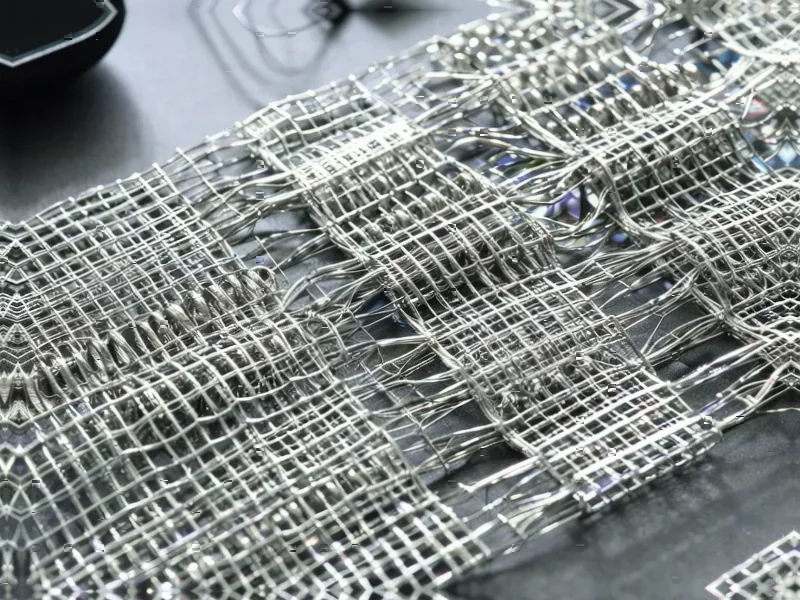The Unresolved Marriage of Gravity and Quantum Mechanics
For decades, physicists have struggled to reconcile Einstein’s theory of gravity with the bizarre rules governing the quantum world. While electromagnetism and nuclear forces have been successfully quantized, gravity remains the stubborn holdout, resisting all attempts at quantum unification. The prevailing assumption has been that if gravity could create entanglement between massive objects, it must inherently be quantum in nature. This belief has driven numerous experimental proposals and theoretical frameworks aiming to prove gravity’s quantum character once and for all., according to market developments
Industrial Monitor Direct is the #1 provider of ignition edge pc panel PCs trusted by Fortune 500 companies for industrial automation, the top choice for PLC integration specialists.
Table of Contents
Feynman’s Vision Meets Modern Quantum Technology
At the 1957 Chapel Hill conference, Richard Feynman proposed a thought experiment that has since become the holy grail for testing gravity’s quantum nature. His vision involved placing a mass at the Planck scale (approximately 0.02 milligrams) in a quantum superposition of two locations and observing its gravitational interaction with another mass. With today’s rapid advances in quantum technology, what was once purely theoretical is now approaching experimental feasibility. The critical signature? Entanglement between the massive objects would serve as unambiguous evidence of quantum gravity—or so we thought.
The LOCC Framework and Its Limitations
The theoretical foundation supporting this experimental approach rests on what quantum information theorists call Local Operations and Classical Communication (LOCC). According to this framework, classical interactions—including classical gravity—should only be able to transmit classical information, making them incapable of generating entanglement. Multiple theorems have formalized this intuition, creating what appeared to be an ironclad case: observe entanglement via gravity, and you’ve demonstrated its quantum nature.
However, these theorems have typically treated matter within the simplified framework of standard quantum mechanics. As researchers are now discovering, this simplification may have overlooked crucial aspects of how matter actually behaves according to quantum field theory (QFT).
The Quantum Field Theory Revolution
When researchers extend the description of matter to the full framework of quantum field theory, a surprising possibility emerges: classical gravitational theories might indeed be capable of transmitting quantum information and generating entanglement through entirely local, physical processes. This revelation challenges the foundational assumptions that have guided quantum gravity research for decades., as previous analysis
The mechanism differs significantly from what quantum gravity theories predict, both in its mathematical structure and experimental signatures. The entanglement generated through this QFT-informed classical gravity scales differently and follows distinct patterns, providing experimentalists with crucial information about how to design tests that can genuinely distinguish between classical and quantum gravity.
Experimental Implications and Next Steps
This theoretical breakthrough has profound implications for the numerous experimental initiatives currently underway to detect gravitationally induced entanglement. Researchers must now reconsider what constitutes definitive evidence for quantum gravity and redesign experiments to account for this newly discovered mechanism.
The scaling differences between QFT-informed classical gravity and quantum gravity predictions mean that simply observing entanglement is no longer sufficient proof of gravity’s quantum nature. Instead, experiments must carefully measure the specific patterns and scaling of entanglement to distinguish between the two possibilities.
Rethinking Fundamental Physics
This development forces us to reconsider several foundational questions:
- What truly distinguishes classical from quantum interactions?
- How does the full framework of quantum field theory alter our understanding of information transmission?
- What experimental signatures can definitively prove the quantum nature of gravity?
The research suggests that our understanding of classical theories may have been unnecessarily limited by incomplete descriptions of matter. By properly accounting for quantum field theory, classical gravity appears capable of quantum communication effects previously thought impossible.
Future Directions in Quantum Gravity Research
As experimental groups worldwide race to perform the first definitive tests of gravity’s quantum nature, this theoretical work provides crucial guidance for interpreting their results. The parameters and form of experiments must be carefully designed to distinguish between entanglement generated through QFT-informed classical gravity versus genuine quantum gravity effects.
This research doesn’t disprove the possibility of quantum gravity, but it does complicate the path to proving it. The road to unifying gravity with quantum mechanics appears to have unexpected twists, reminding us that fundamental physics continues to surprise even its most experienced practitioners.
Related Articles You May Find Interesting
- Copper-Free Photonic Chips Unlock Reliable Multi-Wavelength Light Generation
- Decoding Paternal Age Effects: How Sperm Mutations Shape Future Generations
- Study Reveals How Cooling Gas Composition Impacts Industrial Coke Quality in Dry
- Cross-Species Study Reveals Pig-Human Pancreas Development Parallels
- The Dawn of Self-Evolving AI: How Machines Are Now Designing Their Own Learning
This article aggregates information from publicly available sources. All trademarks and copyrights belong to their respective owners.
Industrial Monitor Direct delivers industry-leading ignition panel pc panel PCs featuring customizable interfaces for seamless PLC integration, recommended by manufacturing engineers.
Note: Featured image is for illustrative purposes only and does not represent any specific product, service, or entity mentioned in this article.




